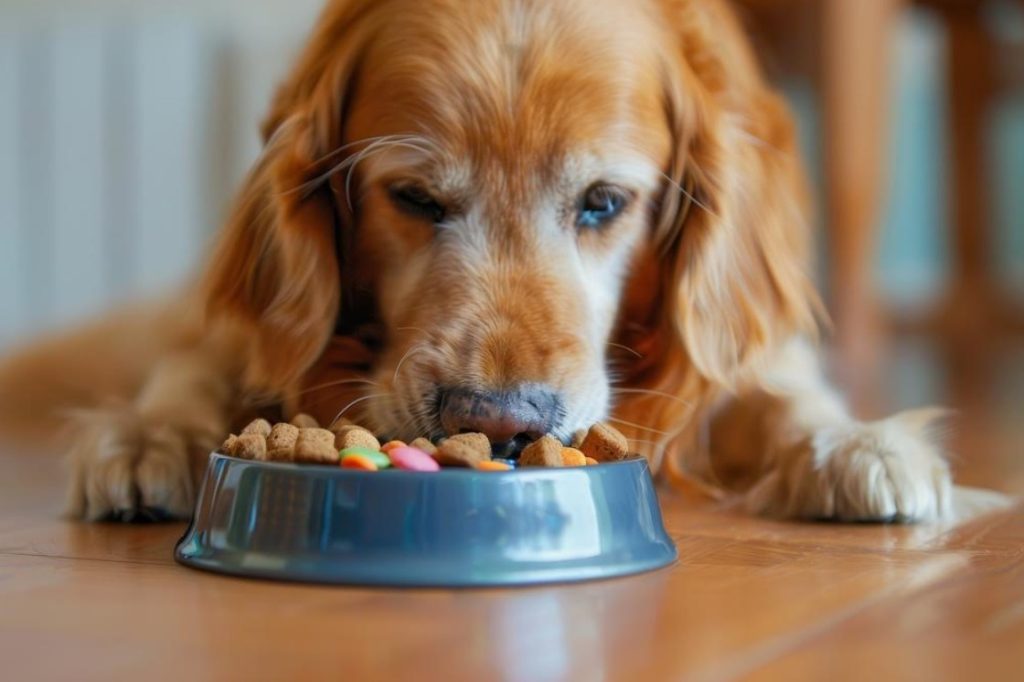No one wants to clean up half-eaten kibble at 6 AM. But here you are, watching your dog eat breakfast quickly, only to throw it up soon after. This mess is more common than you realize. Often, simple diet changes can fix the problem.
The Speed Demon Problem
Some dogs consume food as if they’re in an Olympic competition. They inhale their food so quickly you question if they truly savor it. This rapid eating causes multiple issues simultaneously. Dogs ingest large quantities of air together with their food. Their stomachs become overloaded trying to digest all of it. The outcome? All things rise again, occasionally appearing just as they did before. If your dog is throwing up whole dog food, the people at Nextrition say it’s typically due to them eating too quickly. Their stomach essentially triggers a panic response and expels everything back to its origin.
Why Dogs Rush Their Meals
Knowing why your dog consumes food quickly aids in resolving the issue. Many dogs developed this behavior during their puppyhood when they needed to vie with their siblings for food. Some dogs believe that each meal could be their final one. Some simply become very enthusiastic when it’s mealtime. Dogs from rescue situations frequently experience anxiety related to food due to their prior circumstances. Regardless of the cause, this behavior may turn into a tough habit to eliminate.
The Sensitive Stomach Factor
There are many dogs who do not have the benefit of a resilient stomach. Some puppies have digestive systems that are extremely sensitive. It is as if they were made of fine china. Abrupt movements, feelings of anxiety, or the habit of eating too quickly. These can all be detrimental to the health of these fragile dogs. Even a minor trigger can severely upset their stomachs. The food can present in various forms. It can be either partly digested, enveloped in foam, or even still fully intact. Certain breeds have more sensitive stomachs. So their owners must be vigilant about their food. Smaller dogs, because of their tiny stomachs, frequently struggle more with this issue.
Meal Timing and Size Adjustments
Large meals lead to significant issues. Divide your dog’s daily food into two or three smaller servings. Don’t just serve up a single large meal. Lighter meals are more manageable for delicate stomachs. They likewise diminish the urge to consume food at breakneck speed. Your dog will experience greater contentment during the day rather than feeling hungry between meals. Provide meals at consistent times each day. Dogs thrive on routine, and having a set time for meals lowers their stress.
Creating a Calm Environment
Stress worsens problems for anxious dogs. Feed your dog in a quiet, isolated space. Some dogs eat better in crates for security. For some, a kitchen setup that provides visibility of the surroundings is ideal. Find what works best for your dog. Don’t rush or stand over your dog while it’s eating. This could worsen the problem.
When to Call the Vet
The majority of vomiting linked to eating can be alleviated with straightforward adjustments. However, there’s a need for experts in specific scenarios. Contact your vet if vomiting continues. Do the same if your dog seems unwell or if there is blood. Frequent vomiting can lead to dehydration and serious health issues.
Conclusion
Quick eaters with sensitive stomachs can still enjoy meals. Patience and the right methods help dogs eat calmly. Change things one at a time and let your dog adjust. Soon, mealtimes will be calm again. Then you can put away your carpet cleaning supplies.
